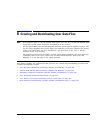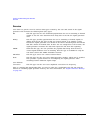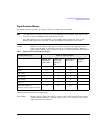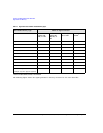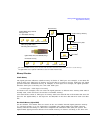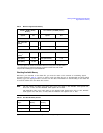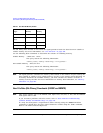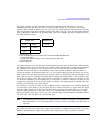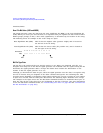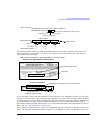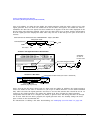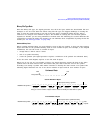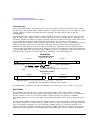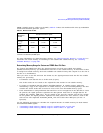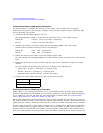
Agilent N518xA, E8663B, E44x8C, and E82x7D Signal Generators Programming Guide 287
Creating and Downloading User-Data Files
User File Data (Bit/Binary) Downloads (E4438C and E8267D)
The signal generator accepts externally created and downloaded user file data for real-time
modulation formats that have user file as a data selection (shown as <“file_name”> in the data
selection SCPI command). When you select a user file, the signal generator incorporates the user file
data (payload data) into the modulation format’s data fields. You can create the data using programs
such as MATLAB or Mathcad. The following table shows the available real-time modulation formats
by signal generator model:
The signal generator uses two file types for downloaded user file data: bit and binary. With a bit file,
the signal generator views the data up to the number of bits specified when the file was downloaded.
For example, if you specify to use 153 bits from a 160 bit (20 bytes) file, the signal generator
transmits 153 bits and ignores the remaining 7 bits. This provides a flexible means in which to
control the number of transmitted data bits. It is the preferred file type and the easiest one to use.
With a binary file, the signal generator sees all bytes (bits) in a downloaded file and attempts to use
them. This can present challenges especially when working with framed data. In this situation, your
file needs to contain enough bits to fill a frame or timeslot, or multiple frames or timeslots, to end
on the desired boundary. To accomplish this, you may have to remove or add bytes. If there are not
enough bits remaining in the file to fill a frame or timeslot, the signal generator truncates the data
causing a discontinuity in the data pattern.
You download a user file to either the Bit or Binary memory catalog (directory). Unlike a PRAM file
(covered later in this chapter), user file data does not contain control bits, it is just data. The signal
generator adds control bits to the user file data when it generates the signal. There are two ways
that the signal generator uses the data, either in a continuous data pattern (unframed) or within
framed boundaries. Real-time Custom uses only unframed data, real-time TDMA modulation formats
use both types, and the others use only framed data.
NOTE For unframed data transmission, the signal generator requires a minimum of 60 symbols. For
more information, see “Determining Memory Usage for Custom and TDMA User File Data” on
page 293.
You create the user file to either fill a single timeslot/frame or multiple timeslots/frames. To create
multiple timeslots/frames, simply size the file with enough data to fill the number of desired
E4438C ESG E2867D PSG
CDMA
a
a. Requires Option 401.
TDMA
b
b. Real-time TDMA modulation formats require Option 402 and include EDGE, GSM, NADC, PDC,
PHS, DECT, and TETRA.
Custom
c
Custom
c
c. For ESG, requires Option 001, 002, 601, or 602, for PSG requires Option 601 or 602.
W-CDMA
d
d. Requires Option 400.
GPS
e
e. Requires Option 409.
---



